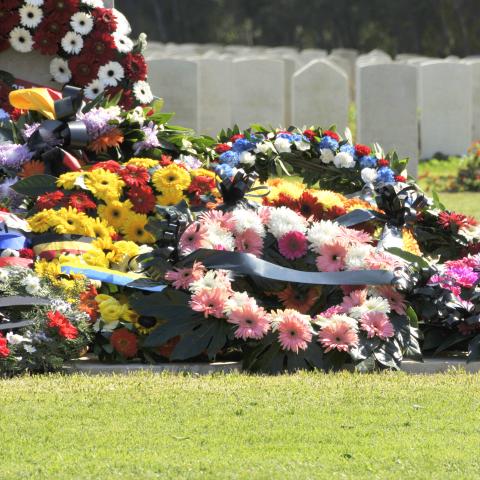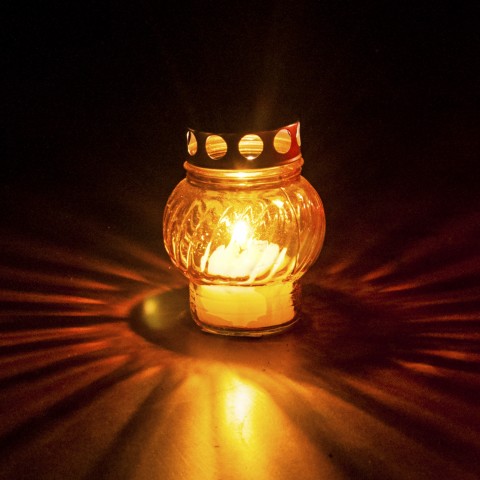Memorial Day for the War Dead (also commonly referred to as Commemoration Day of Fallen Soldiers) is one of Finland’s most significant holidays. It seeks to commemorate Finland’s losses in various wars, as well as losses from the countries it fought. In particular, the Finnish Civil War sparked the idea for this day of commemoration in the war commander Carl Gustaf Emil Mannerheim.
In this article, we’ll be going over what this holiday is and take a look at the wars this day seeks to commemorate. After reading this article, you’ll have a better grasp of Finland’s history and events leading up to its culture today, which is vital for any language-learner. At FinnishPod101.com, we hope to make this learning journey both fun and informative!
1. What is the Commemoration Day of Fallen Soldiers?
The Memorial Day for the War Dead, otherwise known as the Commemoration Day of Fallen Soldiers, is when Finland remembers those who lost their lives in Finnish wars. The idea was put into effect by the Finnish war commander Carl Gustaf Emil Mannerheim in 1940.
This holiday seeks to commemorate the fallen soldiers of the following Finnish wars:
- Finnish Civil War — 1918
- Finnish Winter War (also known as the Russo-Finnish War or Finnish Russian War) — 1939-1940
- Finland Continuation War — 1941-1944
- Lapland War — 1944
While these are the main focus of Memorial Day for the War Dead in Finland, note that Finns also died in the Heimosodat wars and during U.N. peacekeeping missions.
2. When is Memorial Day for the War Dead Observed?
The date of the Commemoration Day of Fallen Soldiers varies from year to year, though it’s always on the third Sunday in May. For your convenience, here’s a list of this holiday’s dates for the next ten years.
- 2019: May 19
- 2020: May 17
- 2021: May 16
- 2022: May 15
- 2023: May 21
- 2024: May 19
- 2025: May 18
- 2026: May 17
- 2027: May 16
- 2028: May 21
3. How is Memorial Day for the War Dead Celebrated?
Celebrations and commemoration activities aren’t extensive in Finland, though this holiday is close to Finns’ hearts. Typically, church services are held on Memorial Day for the War Dead. Following these services, Finns often visit the graves and tombs of fallen soldiers to pay their respects and to simply remember the sacrifice they made.
4. Additional Information on the Finnish Wars
Let’s look at each main war that we mentioned earlier, to give you a better idea of Finland’s history and what this day means to them.
1- Finnish Civil War (1918 )
After the Russian Empire collapsed in WWI, Finland—who was, up until that point, under Russia’s control—was left with a shaky structure of governance, as well as a power vacuum. This took place during a time of growth and improvement in Finland, a time when change was sought after and becoming increasingly necessary.
Germany planned to gain control of Finland with Russia’s collapse. The plan was to turn Finland into a monarchy under German control—called the Kingdom of Finland—seeing as Finland had fallen into Germany’s sphere of influence.
In the meantime, German and Finnish troops fought against the Russian Empire. 36,000 Finns lost their lives in the conflict. However, upon Germany’s loss in WWI, this plan never came to full fruition and was soon cancelled.
This allowed Finland to become an independent and democratic nation, despite the country’s inner turmoil and unease for decades after.
2- Finnish Winter War (1939-1940)
The Finnish Winter War began in 1939 when the Soviet Union invaded Finland in hopes of gaining territory which Finland had denied it. After this invasion, Finland had good fortune for about two months, being able to ward off the offensive forces until the Soviet Union gathered its bearings again.
Fortunately, the war didn’t last very long, though it was fought in very cold temperatures during the winter months. The League of Nations decided that the Soviet Union’s offensive invasion was illegal, and the Moscow Peace Treaty was signed not long after. The Winter War lasted for three-and-a-half months, and led to heavy losses and a few gains for both sides involved (Finland and the Soviet Union).
The Soviet Union ended up gaining much land from Finland (eleven percent of it), but lost good standing in the eyes of other countries, not to mention that its military was exposed as being fairly weak and ineffective. Finland lost much land and had difficulty during the war attaining enough supplies and support, but gained a higher standing in the eyes of other countries after the Moscow Peace Treaty.
In St. Petersburg, there’s a monument dedicated to those lost during this war.
3- Finland Continuation War (1941-1944)
Not long after The Winter War, Finland once again fought against the Soviet Union. Germany served as a co-belligerent to Finland, having started the first battle against the USSR. The top three reasons for the war’s beginning are:
- Regaining territory lost during The Winter War
- Liberating Karelia
- Expanding Finland to become “Greater Finland”
Ultimately, The Continuation War was a failure, ending in ceasefire.
In 1944, the Moscow Armistice was signed. The war resulted in the loss of 63,200 Finns, as well as 158,000 Finns with injuries.
4- Lapland War (1944-1945)
The Moscow Armistice signed to end the previous war posed a condition that led to the Lapland War between Finland and Nazi Germany: all German troops had to leave Finnish territory. This condition was made in light of the Soviet Vyborg—Petrozavodsk Offensive which took place in 1944.
The German evacuations were met with few problems at first, until the Soviet Union told Finland it needed to force the Germans out more effectively, as well demobilize the Finnish Army. As a result, Finland fought a few battles against Germany until most of the German forces had reached Norway (which it occupied at the time). In 1945, all of the German troops had left Finland.
WWII ended shortly after.
5. Useful Vocabulary for Commemoration Day of Fallen Soldiers
Here’s some vocabulary you should know for the Finnish Commemoration Day of Fallen Soldiers!
- Sotilas — “Soldier”
- Carl Gustaf Emil Mannerheim — “Carl Gustaf Emil Mannerheim”
- Puolustaa — “Defend”
- Sota — “War”
- Hautakynttilä — “Grave candle”
- Kaatua — “Fall”
- Rauhanturvaaja — “Peacekeeper”
- Sankarivainaja — “Hero of the deceased”
- Menehtynyt — “Perished”
- Leski — “Widow”
- Sankarihauta — “Hero’s tomb”
To hear each of these vocabulary words pronounced, check out our Finnish Commemoration Day of Fallen Soldiers vocabulary list. Here, you’ll find each word accompanied by an audio file of its pronunciation.
Conclusion
Which event mentioned in this article do you think was the most interesting? Does your country have a holiday that honors those fallen in war? Let us know in the comments! We always love hearing from you.
To learn more about the culture in Finland and the Finnish language, visit us at FinnishPod101.com and take advantage of our numerous and effective learning tools. From insightful blog posts to free vocabulary lists and an online community forum, there’s something here for every learner! You can also create (or upgrade to) a Premium Plus account to begin using our MyTeacher program, where you can learn Finnish one-on-one with your own personal Finnish teacher.
We hope you took away something valuable from this article, and that you feel more knowledgeable about this aspect of Finnish history. Know that your hard work will pay off; before you know it, you’ll be speaking like a native Finn!














